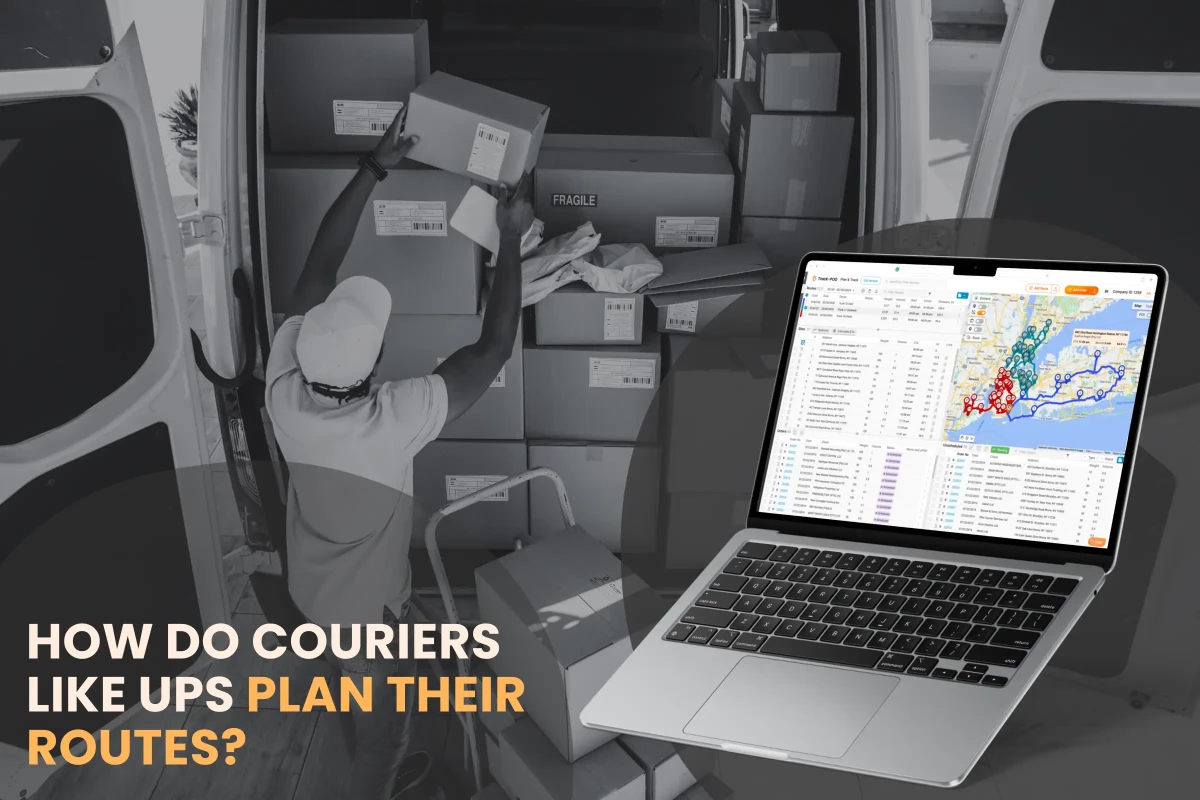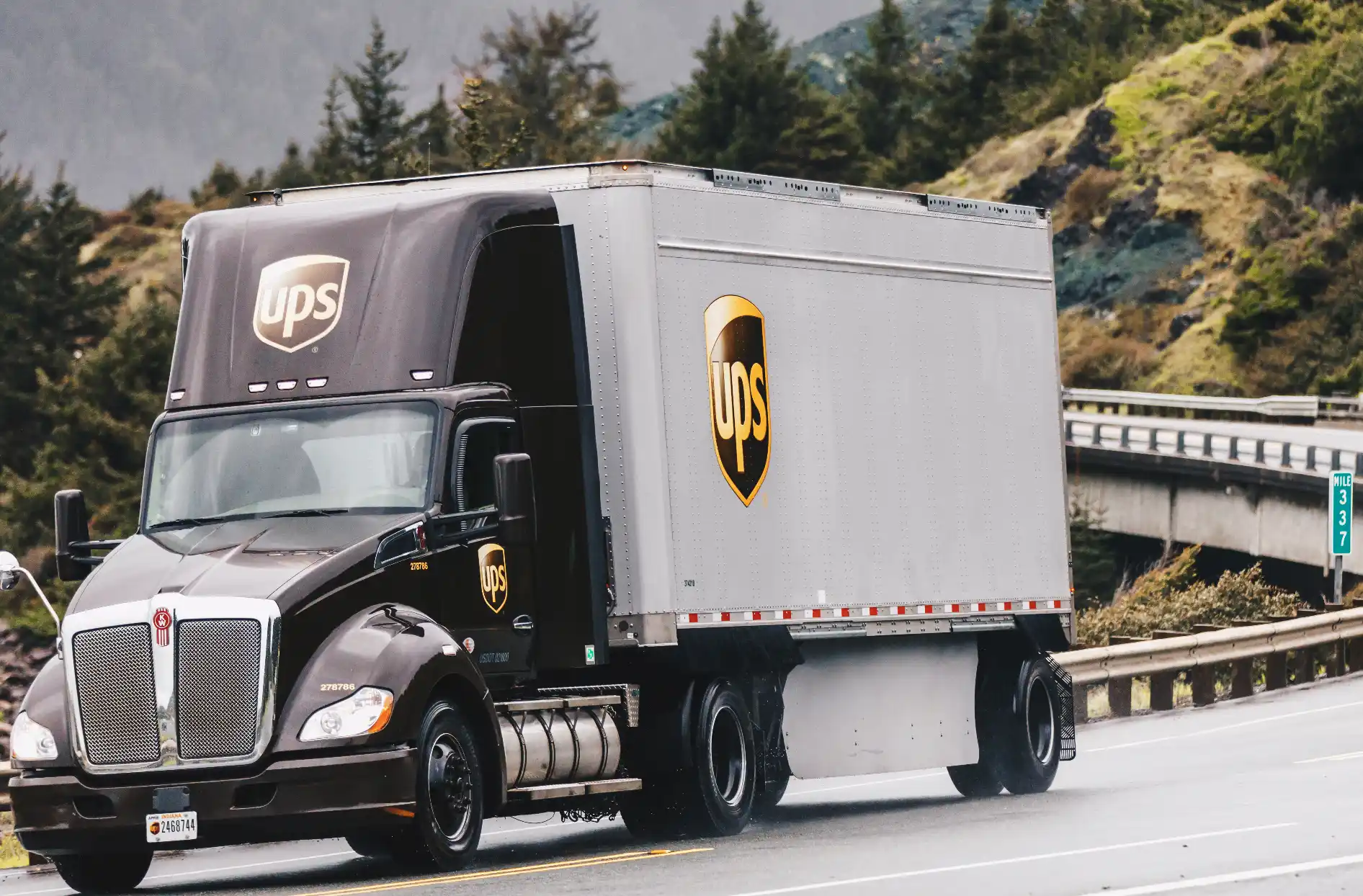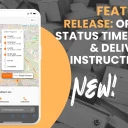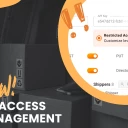How Do Couriers Like UPS Plan Their Routes?
Updated on
February 26, 2024
by
Mike Foster

In delivering packages, a small company wants to be as successful as big ones like UPS. To accomplish this, it is essential to look at how big and small companies work differently. Big giants like UPS are successful partly because they use innovative tools that help them work faster and better.
The secret to success for a small delivery business is the fact that technology similar to the one used by the industry giants is already available and affordable to them as well!
Forest Russman, the Chief Logistics Innovation Officer at a charity called Meals on Wheels Southwest Ohio and Northern Kentucky, and formerly the On Road Supervisor of the UPS Package Operations Center in Sharonville, Ohio, shared his experience of transferring his UPS experience to the charity’s operations in one of the recent webinars run by Track-POD:
"Managing logistics at enterprise corporations and small businesses are vastly different. Technical expertise is different, and openness to testing new tools is different. What is similar is the search for greater operational efficiencies that translate into savings.
At Meals on Wheels, we tested maybe 6 different software solutions before selecting Track-POD. Once we had the Track-POD platform running, it was just like at UPS in terms of having the functionality to run our operations efficiently."
Let’s explore what exactly industry leaders use and value in their operations and how those qualities can be implemented on a smaller scale.
Decoding route planning strategies of UPS
UPS is a global logistics leader that operates in over 200 countries and territories worldwide, with a workforce of over 500,000 employees offering domestic and international shipping, air and ocean freight, and customs brokerage.
The company operates a fleet of nearly 200 thousand vehicles, delivering 24.3 million packages daily.
UPS is committed to reducing its carbon footprint and using technology to save fuel. Over $1 billion has been invested in alternative fuel and advanced technology vehicles and fueling stations to help meet their target of reducing absolute GHG emissions by 12% by 2025.
Let's delve into the key tactics that keep their processes smooth and effective.
Package volume optimization: UPS smartly manages the number of packages for delivery. They ensure they're trying to deliver only a few packages simultaneously. This way, each package gets where it needs to go without any mix-ups, and everything runs smoothly.
Delivery window planning: They are very careful about when packages should be delivered. UPS makes plans so that every package arrives on time, which makes customers happy and keeps things reliable.
Load planning: UPS maximizes the use of its delivery trucks. By efficiently planning their load and utilizing truck capacity fully, they can transport more packages on each trip. This minimizes the number of trips needed and reduces overall operational costs.
Traffic pattern consideration: Dealing with traffic can be tough, but UPS pays attention to what the roads are like at different times so they can pick routes that won't get them stuck in traffic jams.
Real-time data integration: UPS uses up-to-date information while deciding which way their trucks should go. They can immediately change plans for faster deliveries if something changes suddenly—like a road closing or lots of traffic.
Driver feedback incorporation: UPS values the insights of their drivers. Drivers share their opinions about what works well and what doesn't on their routes. The company listens to these tips because they help them find better ways to deliver those packages.
How does strategic route planning influence the growth of UPS?
Strategists and UPS take into account many different factors when planning their delivery routes. These include such things as shifting freight from, for instance, freight by air to road delivery when it comes to global operations, but the more usual considerations that are even more relevant to local delivery companies also do come into play:
Speed & delivery details
UPS offers a variety of shipping rates and options to their customers. Users can use the UPS Time and Cost Calculator to get estimated shipping quotes for their global package delivery services. They can provide the origin, destination, and weight of your shipment to compare service details and then sort your results by time or cost to find the most cost-effective shipping service.
Cost efficiency
UPS carefully plans its delivery paths to use less fuel, spend less money, and make its deliveries as efficient as possible. According to the 2022 UPS Sustainability Report, UPS has invested over $1 billion in alternative fuel and advanced technology vehicles and fueling stations to help meet their target of reducing absolute greenhouse gas (GHG) emissions by 12% across their global ground operations by 2025 (2015 baseline)
Customer experience
UPS is committed to providing a frictionless customer experience. By focusing on what matters most to their customers – speed and ease – they aim to provide the best digital experience powered by their global smart logistics network.

Source: UPS
The company is modernizing its strong values-based culture and encouraging its people to bring their authentic selves to work – making UPS a place they enthusiastically recommend to friends and family. They measure their success on this strategic initiative through improvements in the likelihood of recommendations, which is directly tied to the customer experience when receiving the service.
Top benefits of automated routing even a small business can reap
Managing routes in an Excel sheet is an old-school practice that will set a small business on a course of failure - it is simply a wiser business decision to look ahead, learn from the industry leaders, and try replicating their success.
As Forest Russman mentioned, when it comes to change management in an organization, the key to transitioning to a new software solution is getting all stakeholders aligned on the core benefits the solution will bring.
Here are the top benefits that the “Let’s be like UPS” approach will bring:
Greater operational efficiency
Routing software, like Track-POD, works faster and better than planning routes by hand. Such software solutions can determine the most efficient routes for your drivers based on order details, vehicle capacity, traffic conditions, and driver availability.
It can also provide dispatchers and customers with up-to-date information on the driver's location, increasing driver visibility, operational transparency, and, in the end, greater customer satisfaction.

Frictionless adjustments in real-time
Find yourself in need of adding a new order to the already-in-progress route or transferring an order from one driver to another? Automated routing solutions assist dispatchers in getting such tasks done without any friction, as the software will automatically find the best route solution to incorporate the update.
Improved cost-effectiveness
With route planning solutions, small businesses report drops in operational expenses by up to 75%, meaning that using this software, dispatchers are able to manage up to for times more drivers than compared to the legacy methods of route management.
In addition, the software enables fuel savings andan increased number of successful deliveries, thus resulting in even greater savings as they no longer need to waste time and resources on managing customer expectations and re-deliveries.
Enhanced accuracy
Paperless automation makes planning delivery routes and executing deliveries more accurate as there is a lesser chance of human error. With route planning software, each step in the delivery process can integrate various safety checks (such as load checks) to avoid mistakes.
Improved customer satisfaction
Enhanced visibility is a cornerstone for great customer satisfaction, meaning that customers expect to be informed about their order status and ETA. Software-enabled automation is able to inform customers at each step of the process, thus meeting the ever-increasing requirements.
Introducing Track-POD: a route planning and ePOD solution that brings industry-leading capabilities
Track-POD is a cloud-based delivery management software designed to streamline logistics operations. It features an electronic proof of delivery app, allowing for a mobile solution that provides real-time monitoring of driver performance and delivery confirmation.
The software is aimed at ensuring deliveries are completed fully and on time, offering capabilities for capturing signatures and photos, sending notifications, tracking vehicles, and optimizing routes through GPS and a paperless delivery system.
Below are the key features of Track-POD that enable any small business to operate at the level of efficiency that defines market leadership:
- Route optimization: Track-POD’s algorithm-based routing will enable you to schedule the most optimal deliveries at the click of a button. You will be provided with ETA optimization and able to update the routes in case of the need for any changes.
- Multi-drop route planner: Make the most of every delivery run with Track-POD's multi-drop route planner. The route planning software will calculate how best to combine your deliveries into routes that optimize your efficiency, saving you time and money.
- Real-time route updates: Once your drivers are in transit, Track-POD will enable you to track your drivers’ performance along the route via Track-POD’s Driver App installed on the drivers’ smartphones. You will also be able to leverage this link to communicate directly with the drivers.
![]()
Addressing common concerns about choosing automated routing
Technology has a way of making things smoother, but it also brings along its fair share of challenges. So, why bother diving into the nitty-gritty of these concerns? Well, because understanding them will provide better planning capability for future operations, and it will also help to address any stakeholder concerns when selecting a route planning software.
Think about it – if you know the bumps in the road, you can navigate them better. That's why it's a must to discuss and get the lowdown on these potential issues. So, buckle up; let's explore these concerns and learn how to make the most of the automated routing journey.
Key concerns when selecting a route planning software:
- Complexity: concerns that automated routing systems might be too complex to implement and may require extensive technological resources and skills.
- Job displacement: concerns about potential job displacement due to increased automation and efficiency.
- Adaptability issues: concerns regarding the adaptability of automated routing systems to specific business needs.
- Integration challenges: concerns related to integrating new technology seamlessly into existing operational processes and other business software.
- Cost considerations: concerns about the upfront costs of implementing automated routing solutions without a clear understanding of the value the solutions can bring.
- Data security and privacy: concerns about the security and privacy of sensitive data within automated routing systems and data storage locations.
- User resistance: the anticipation of resistance from employees, especially drivers, in adapting to and embracing new automated technologies.
How to address the above concerns?
- Request a personalized demonstration of the software you are considering. Use the meeting to ask direct questions and try to challenge the vendor representatives.
- Get a free trial of the software you are considering. Import your routes and try the routing functionality to make sure the solution meets your needs.
- Explore software review sites (e.g. G2) to check the feedback provided by other users, just like yourself.
- Create a plan of software adoption and note key areas you want the software to help you improve. Discuss these with the software reps during the demo or onboarding calls.
- Stay positive. Consider that industry leaders are using automated route planning for greater operational efficiency and growth.
- As soon as you select the vendor, ask them to help you with the solution’s adoption, including educating your drivers on how to use the software.
Final words
Big companies like UPS use the latest technology to plan their delivery routes in a more effective way. Tech solutions help them deliver things quickly and flawlessly. They rely on tech to make data-driven decisions that enable them to save operational costs, run greener operations, and deliver excellent customer service.
Luckily, such technology and expertise can be leveraged by smaller companies as well, enabling them to accelerate their growth. So ditch your Excel sheets, overcome the initial concerns you may be having, and start exploring how to run your delivery business with the same efficiency as UPS does it.




